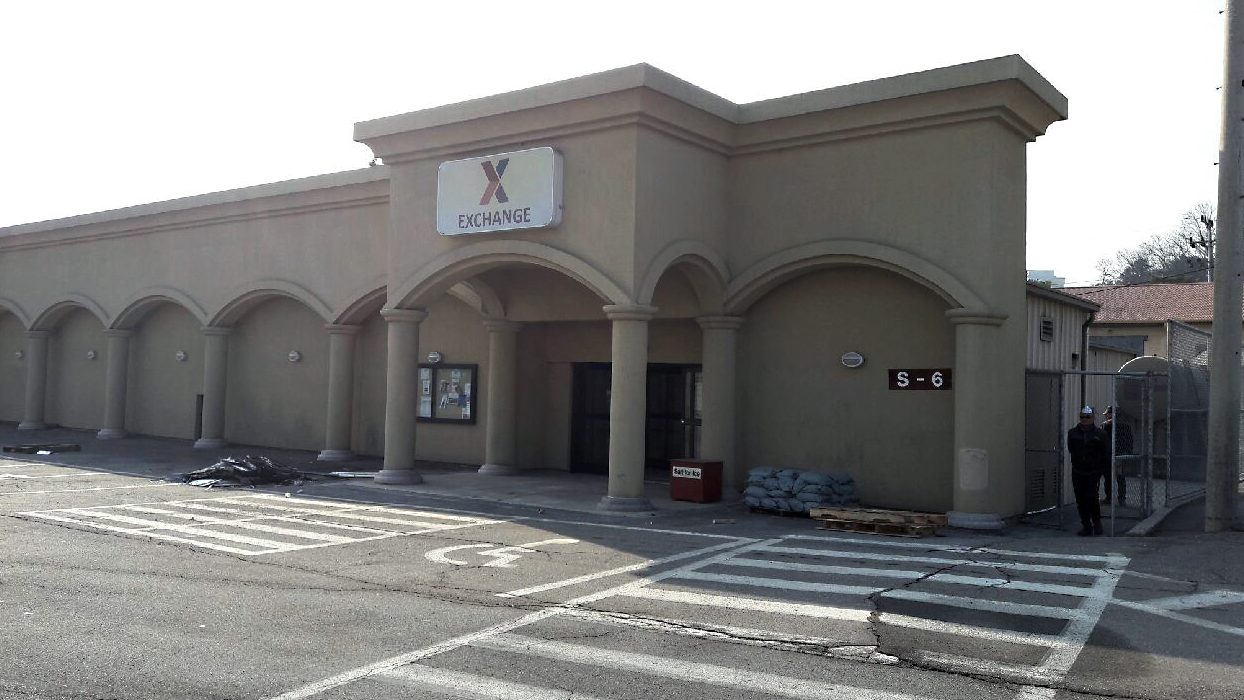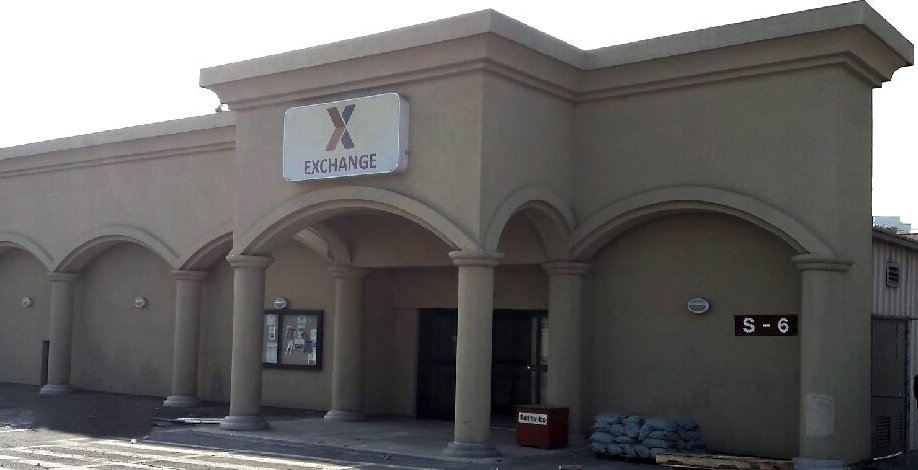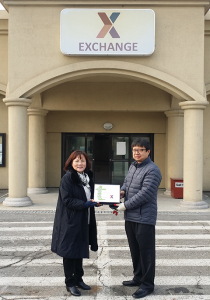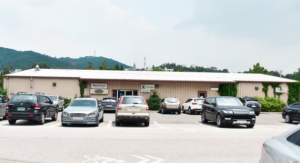Exchange Closes at Historic Military Camp in South Korea


The Camp Red Cloud Exchange after its closing.
As the Army relocates troops to Camp Humphreys in South Korea, Exchanges across the northern part of the country are slowly closing. Many of these Exchanges and camps they supported have served the military since the Korean War.

General Manager Ann Yi presents a Thanks award to Camp Red Cloud Exchange Manager Kim, Sang-in for his service. Kim now works at South Korea’s Camp Casey.
As an era ends, the Exchange team unites to deliver exceptional customer service—down to the last day.
Camp Red Cloud and its Exchange, which closed in December, was the fourth installation to close in the northern part of the country since 2017. In April 2018, Camp Jackson closed, preceded by Camp Stanley in September 2017. Camp Coiner closed at Yongsan in June 2017.
‘Serving the best customers: our Soldiers’
Northern Consolidated Exchange General Manager Ann Yi said Exchange teams at each camp worked closely with the military, local units and organizations until the last days.
“We wanted to ensure that the Exchange, which has been here since the 1950s to support the military, stayed with them until the last day,” she said. “The majority of the associates closing each facility started working at the Exchange in their early 20s and spent more than 30 years serving the best customers: our Soldiers.”
Some of the 41 associates affected by the closings retired, while others were offered positions at Camp Casey or Camp Humphreys, Yi said.
Associates from Exchanges at Camp Casey and Camp Hovey received a monetary team award for readying Red Cloud for closing.
Humphreys expansion

Camp Stanley at its grand opening, 2004.
The camps closed as part of the U.S. military’s relocation of thousands of troops from Seoul and areas north of the capital city to Camp Humphreys in the more rural Pyeongtaek area. Camp Humphreys is expected to grow from 10,000 troops and families to 44,000 troops families and civilians in the coming years.
In November 2017, to support the growth of Camp Humphreys, the Exchange unveiled its third-largest shopping center in the world. In September, Exchange and installation leaders cut the ribbon on a new mini-mall located near a housing development at Humphreys.
What about the other Exchanges?
Under the relocation program, Camp Kim will close in August. The Exchange will leave Yongsan by the end of the year, although the Dragon Hill Lodge Express, Subway, Pizza Hut will remain open. K-16, a small Army post with about 800 Soldiers about 30 minutes away from Yongsan will remain open.

Camp Coiner Exchange, 2017
Camp Casey is expected to remain open for at least another five years, while Camp Hovey could remain open for at least three years. The Rodriquez Training Range will remain open.
Camp Bonifas and its Exchange, located 1,300 feet on the South Korean side of the demilitarized zone, the stretch of no-man’s land between the two Koreas, will remain open.
Check out pictures of how Exchanges served troops during the Korean War in the Exchange History Flickr album.


I would like to view all the obituary for each month and years.
Hi Ms. Mays:
Thank you for writing to your Exchange Post. To view obits:
1. Go to the Exchange Post home page, http://www.theexchangepost.com.
2. Scroll all the way to the bottom.
3. Click on the tab that says “Obituaries, Retirements and Transfers.”
4. Go to the year you want.
5. Click on the arrow key to see the drop-down menu of months.
6. Click on the month.
If you need any further assistance, don’t hesitate to contact me. Again, thanks for writing!
Steve Smith
Editor
The Exchange Post
From what I’ve been reading, the Korea I remember is long gone. The Camp where I was initially stationed was turned over to the ROK army after we moved out in 1970 (Charley Block Camp Custer.) and now the rest of the Camps in the Western Corridor are all being abandoned except for Camp Liberty Bell (Camp Bonifas).
I hope to one day go back to visit and try to walk where I walked at 19-years-old then. Paju-ri, Yong-ju-gol, Munsan-ni, and the Camps north of the Imjin River. Will RC#1 also remain open for support of the troops remaining in the DMZ area?
My third and final tour was in 1985 as a Military Club Manager stationed at Camp Casey, Dongducheon TDC. My middle tour I spent at Camp Liberty Bell in 1975.
Thank you so much for your memories, Domingo, and your support of the Exchange!
I served in 1986. To 87. I have military i.d. do you know if I can visit camp Casey. I just wanted to look around. Is it possible and how can I do it.
Hi, Harold. Sorry for the delayed response. Trying to track down an answer for you. Hope to have something this week.
Robert Philpot
The Exchange Post
Spent a year tour at Camp Casey 1st Battallion 72nd Armor Division between 1992-1993. I have always said it was the best year of my life. So many great guys and memories there. The PX was a huge morale booster. I know my unit has deactivated which all the units I have served with in the regular army has deactivated except for a national guard unit. I would love to visit Camp Casey one more time along with the town outside the main gate. I know it all has changed, but what an awesome time it was.